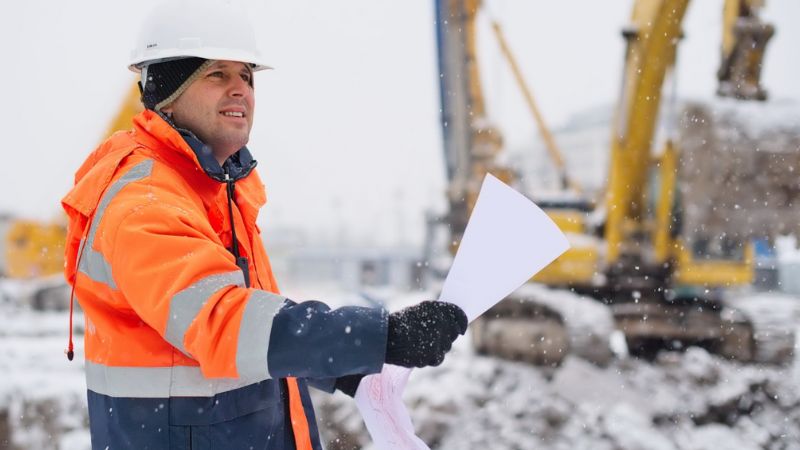Cold weather poses unique challenges for masonry construction projects. From mortar freezing to reduced curing times, understanding how to plan for cold weather masonry construction is crucial for ensuring the structural integrity and longevity of your build. Proper planning can mitigate risks, ensuring that the quality of masonry work is not compromised by low temperatures. In this guide, we’ll cover essential tips and strategies for managing cold weather masonry construction. From selecting the right materials to implementing effective curing techniques, you’ll find actionable advice to keep your project on track and up to code, even in the harshest conditions.
How To Plan For Cold Weather Masonry Construction?
Understand the Challenges of Cold Weather Masonry Construction
Planning for cold weather masonry construction requires a thorough understanding of the challenges posed by low temperatures. One of the primary concerns is the risk of mortar and concrete freezing before they set properly, which can significantly weaken the structure. Mortar that freezes loses its strength and bonding capabilities, leading to potential structural failures. Additionally, cold temperatures slow down the curing process of concrete, which can delay the project timeline and affect the overall quality of the masonry work. It’s crucial to recognize these risks and take proactive measures to mitigate them.
Another challenge is the thermal shock that materials can undergo when exposed to fluctuating temperatures. When materials are subjected to rapid changes from cold to warm temperatures or vice versa, it can cause cracking and other forms of damage. This is particularly concerning for masonry structures that need to maintain their integrity over time. Understanding these challenges allows contractors to develop strategies that ensure the durability and safety of the construction. Proper planning, including the selection of appropriate materials and techniques, is essential to overcome these obstacles and achieve a successful outcome.
Select the Right Materials and Techniques
Choosing the right materials is a critical aspect of planning for cold weather masonry construction. Opt for low-heat cement and admixtures that are designed to withstand lower temperatures. These materials can prevent the mortar from freezing and ensure a stronger bond between bricks or blocks. Additionally, using antifreeze additives in the mortar mix can help lower the freezing point of water in the mix, providing extra protection against cold weather. It’s also advisable to use materials that have been stored in a controlled environment to maintain their optimal properties.
In addition to material selection, employing the right construction techniques is vital. Pre-heating masonry units and substrates before application can prevent thermal shock and improve adhesion. Covering and insulating work areas with thermal blankets or heated enclosures helps maintain an optimal temperature for masonry work. Implementing these techniques ensures that the masonry work progresses smoothly despite the cold weather. Contractors should also schedule work during the warmest parts of the day and avoid working in extreme cold conditions whenever possible. By combining the right materials with effective techniques, contractors can significantly enhance the quality and durability of cold weather masonry construction.
Also Read:- Saving Tips for Masonry Projects
Implement Effective Curing Methods
Effective curing is paramount to the success of cold weather masonry construction. Curing allows the mortar and concrete to achieve their desired strength and durability, but cold weather can hinder this process. To ensure proper curing, maintain a consistent temperature above 40°F for at least 48 hours after the application of mortar and concrete. This can be achieved using heated enclosures, curing blankets, or portable heaters. These methods help create a controlled environment that promotes proper hydration and curing of the materials.
In addition to maintaining temperature, moisture management is also crucial. Prevent the rapid drying of mortar and concrete by covering them with plastic sheeting or moist burlap. This helps retain moisture and ensures that the curing process is not disrupted by the dry, cold air. Regularly monitor the curing process and make necessary adjustments to maintain the optimal conditions. Effective curing methods not only improve the strength and durability of the masonry but also help prevent common issues like cracking and scaling. By prioritizing proper curing, contractors can ensure the long-term success of their cold weather masonry projects.
Monitor Weather Conditions and Plan Accordingly
Monitoring weather conditions is an integral part of planning for cold weather masonry construction. Accurate weather forecasts help contractors schedule work during favorable conditions and avoid extreme cold spells. It’s essential to have a flexible work schedule that can adapt to changing weather patterns. When severe cold weather is predicted, consider postponing non-essential work and focus on preparing and protecting the worksite.
Regularly monitoring the temperature and weather conditions allows contractors to implement timely measures to protect the masonry work. This includes adjusting the use of heating equipment, applying additional insulation, and ensuring that materials are kept in optimal conditions. Being proactive and prepared for sudden changes in weather can prevent costly delays and damage to the construction. Additionally, having contingency plans in place for extreme weather events ensures that the project remains on track and meets the required standards. By staying informed and prepared, contractors can effectively manage the challenges of cold weather masonry construction and achieve successful outcomes.
Conclusion
Proper planning and execution are vital for successful cold weather masonry construction. By following best practices and utilizing appropriate materials and techniques, you can ensure that your masonry work withstands the challenges posed by cold temperatures. Preparation and vigilance are key to maintaining the quality and safety of your construction project throughout the winter months.
FAQs
What materials are best for cold weather masonry construction?
Use low-heat cement, antifreeze admixtures, and insulated blankets to protect mortar and concrete during cold weather.
How can I ensure proper curing of masonry in cold weather?
Maintain temperatures above 40°F for at least 48 hours after construction using heated enclosures, curing blankets, or portable heaters.
